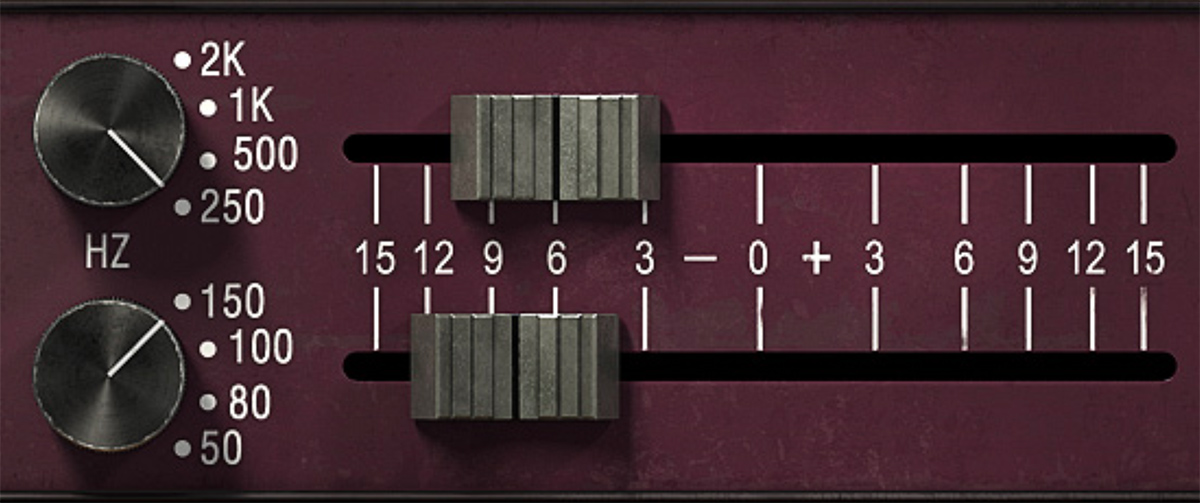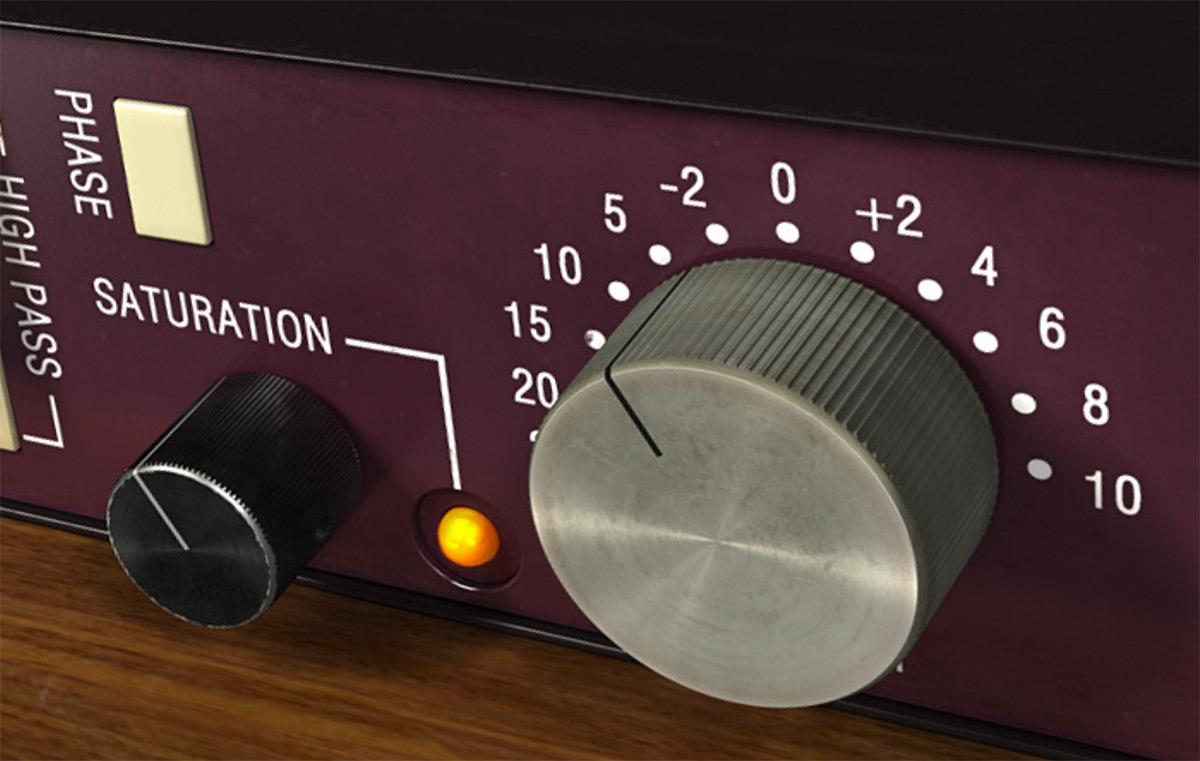User Manual
Trident A-Range
Foreword by Malcolm Toft
Background
User Interface
Buying Recommendations
Extended Features
Credits
I have evaluated the Softube Trident A-Range equaliser plug-in at my studio with some very experienced recording engineers. After exhaustive listening tests with many different instruments and vocals, I am pleased to say that we all agree this is an incredibly accurate software recreation of my original A-Range design from 1971.
It exhibits all of the nuances of tone from the original, right down to the ‘saturation’ control which emulates the overdriven artifacts from the original when large amounts of equalisation are applied or the input is driven hard.
Well done to all the guys at Softube.
Professor Malcolm Toft
Original designer of the Trident A-Range console
Torquay, Devon, England
December 17, 2009
The Trident™ A-Range® is a legendary piece of equipment. As only thirteen A-Range consoles were ever made, it remains a holy grail for sound engineers and producers around the world that hope to create equal works of art to those that were originally recorded on the A-Range – David Bowie’s Ziggy Stardust, Queen, Elton John, the list goes on...
The A-Range was originally designed in the early 70’s for Trident Studios in London by Malcolm Toft and Barry Porter. Toft was employed as a sound engineer at Trident Studios and when the studio needed a 24 track recording console, he started Trident Audio Developments to design and build the Trident A-Range. Other products followed and found their way to studios around the world. Toft remains active to this day, developing products under the Trident name.
The A-Range plug-in from Softube is the first and only native plug-in that has been fully endorsed by Toft and Trident Audio.

About the Trident A-Range
The plug-in version of the A-Range is modeled after a channel on one of the original 13 Trident A-Range consoles. This particular channel strip is channel number 15 from Sweet Silence Studio ‘B’ in Denmark and was borrowed from Danish producer Flemming Rasmussen. The A-Range console has been in Rasmussen’s care for a long time and used by Flemming Rasmussen when recording albums such as Metallica’s Ride the Lightning, Master of Puppets and ...And Justice for All.
The A-Range channel features four bands of equalization and high and low pass filters, the sound of the filters are often referred to as “colorful” and “musical”. When running a hot enough signal through the original unit and boosting the bands it is possible to get it to distort, the sound is a hairy and effective saturation that is just right in some situation and just wrong in others! Even though the unit was never designed to distort, it has definitely been used this way by renowned producers and we thought it was only appropriate to stay true to the original unit and add the saturation to the plug-in as an option!

The layout of the A-Range equalizer is simple and easy. You have four different bands of equalization, with a frequency selector knob and a gain fader each. Low and High Pass filters can be activated by pressing the off-white buttons, and a handy Phase Invert switch is found on the right side of the panel. The Saturation knob engages the console saturation, and is best used as a subtle effect. If you don’t wish to get saturation, just put it in the OFF position and all saturation circuits will be de-activated.
The A-Range console was actually designed to have very little distortion, but it was nevertheless possible to crank up the input volume and equalization bands to make it distort, an effect that has been of much use in lots of recordings. The actual amount of saturation depended heavily on the audio material and amplification before the console, so we added the Saturation knob to make things easier for you. If all bands are set to zero gain, Saturation on its default position (12 o’clock) and Output Volume on 0 dB, the A-Range plug-in will have unity gain.

Click here to view the full-sized image in a new tab
- High freq.
- High gain
- Low mid freq.
- Low mid gain
- Phase invert
- Output volume
- Low pass
- High mid freq.
- High mid gain
- Low freq.
- Low gain
- High pass
- Saturation
- Saturation LED
The four equalizer bands have two controls each – a “frequency selector” knob and a gain fader. The fader will boost the signal up to 15 dB by dragging the fader to the right and attenuate the signal by 15 dB by dragging it to the left.

High Shelving Band: The frequency options for the High Shelving Band are 15 kHz, 12 kHz, 10 kHz and 8 kHz.
When boosted, the High Shelving Band gives a beautiful highend shimmer to just about any material. Don’t be afraid to try it on a master bus, as the result can be fantastic!
High Mid Band: Bell type with the following center frequencies: 9 kHz, 7 kHz, 5 kHz and 3 kHz.
The bell filters interacts with each other in a rather funny way. For example, even if the gain of the Low Mid Band is set to zero, changing the frequency of that band will affect the frequency response of the High Mid Band filter significantly. The results are quite unpredictable and this is part of the reason for the unusual sound of the A-Range!
Low Mid Band: Bell type with the following center frequencies: 2 kHz, 1 kHz, 500 Hz and 250 Hz.
Low Shelving Band: The frequency options for the Low Shelving Band are 150 Hz, 100 Hz, 80 Hz and 50 Hz.

Low Pass and High Pass Filters: The Low Pass and High Pass filters are controlled by three buttons respectively, which sets the cut-off frequency for the filters – 15 KHz, 12 kHz and 9 kHz for the Low Pass and 100 Hz, 50 Hz and 25 Hz for the High Pass. The cut-off characteristic is unusual and not exactly coherent but the slope is about 12 dB per octave.
The three settings work independently and can be used in any combination which means that the more buttons you engage, the more attenuation you get. For example, pressing all three Low Pass buttons will actually result in a filter with an even lower cut-off frequency than 9 kHz.
Phase Invert: The Phase button inverts the phase when pressed.
Saturation: The Saturation or distortion of the A-Range is placed after the equalizer bands and is depending on the gain settings of the bands. A louder or “hotter” signal will make the unit distort more and a weaker signal will make it distort less.
To be able to handle signals of different volumes and to make up for equalizer band settings we added a Saturation knob that basically is a volume compensated input gain for the saturation circuits. The LED next to the saturation knob indicates when the signal is being distorted. If you want to be sure not to add any saturation to the sound, click the OFF label and the saturation circuit will be bypassed.
You will get the best result if the saturation is used sparingly on percussive sounds, like a drum bus. Let it take care of occasional peaks, and do not run it too hot.

Output Volume: The Output knob controls the output volume from the plug-in. The range of the output volume is -30 dB to 10 dB.
VENUE stereo is not supported due to DSP limit constraints. You will need to use the MULTI-MONO mode instead of STEREO mode. Normal STEREO mode is however available in AAX.
We always make buying recommendations in our manuals for a hardware equivalent of the plug-in. In this case, it’s really simple and really hard – If you can find an A-Range channel and can afford it, get it!

This is a photo of channel 15 and 18 from one of the original Trident A consoles. These two are the ones we measured for the A-Range plug-in. A few cosmetic changes have been made to these units while at the Sweet Silence Studios: the original flip switches on the Mute button has been changed to big red switches, the gray fader handles have been changed to bright yellow, and three frequency selector knobs have also been replaced. But it has the original face plate color, a strange but beautiful aubergine-style purple!
A whole range of added control can be accessed with Extended Features. Please see the separate "Extended Features" manual for more information.
Niklas Odelholm – Modeling
Oscar Öberg – DSP programming and modeling
Torsten Gatu – Framework programming
Arvid Rosén – Framework programming
Ulf Ekelöf – 3D rendering
Original hardware was designed by Malcolm Toft and Barry Porter at Trident Audio Developments
The original unit is owned by Flemming Rasmussen at Sweet Silence Studios
ALL VISUAL AND AURAL REFERENCES TO THE TRIDENT A-RANGE ARE TRADEMARKS BEING MADE WITH WRITTEN PERMISSION FROM PMI AUDIO. THE TRIDENT, A-RANGE AND TRIANGLE LOGO ARE TRADEMARKS OF PMI AUDIO GROUP, USED UNDER LICENSE. ALL SPECIFICATIONS SUBJECT TO CHANGE WITHOUT NOTICE. ALL RIGHTS RESERVED.